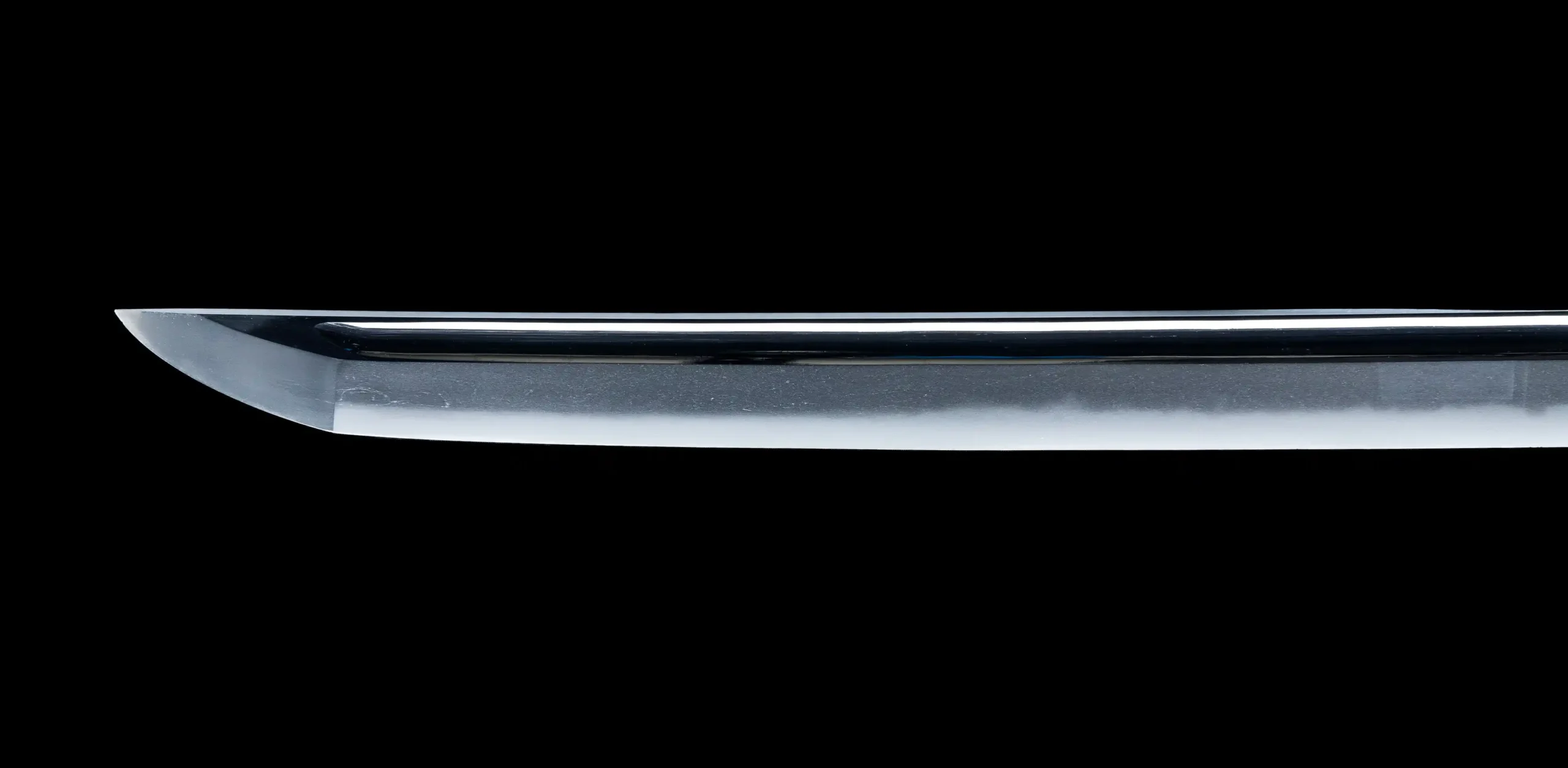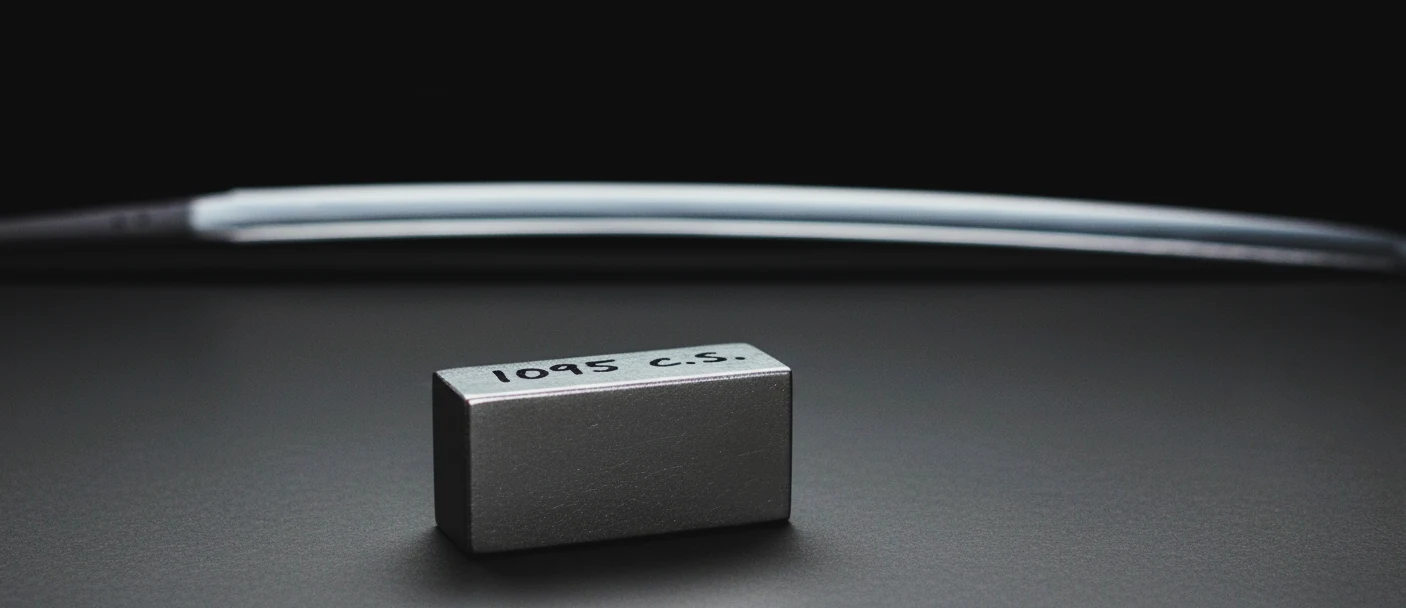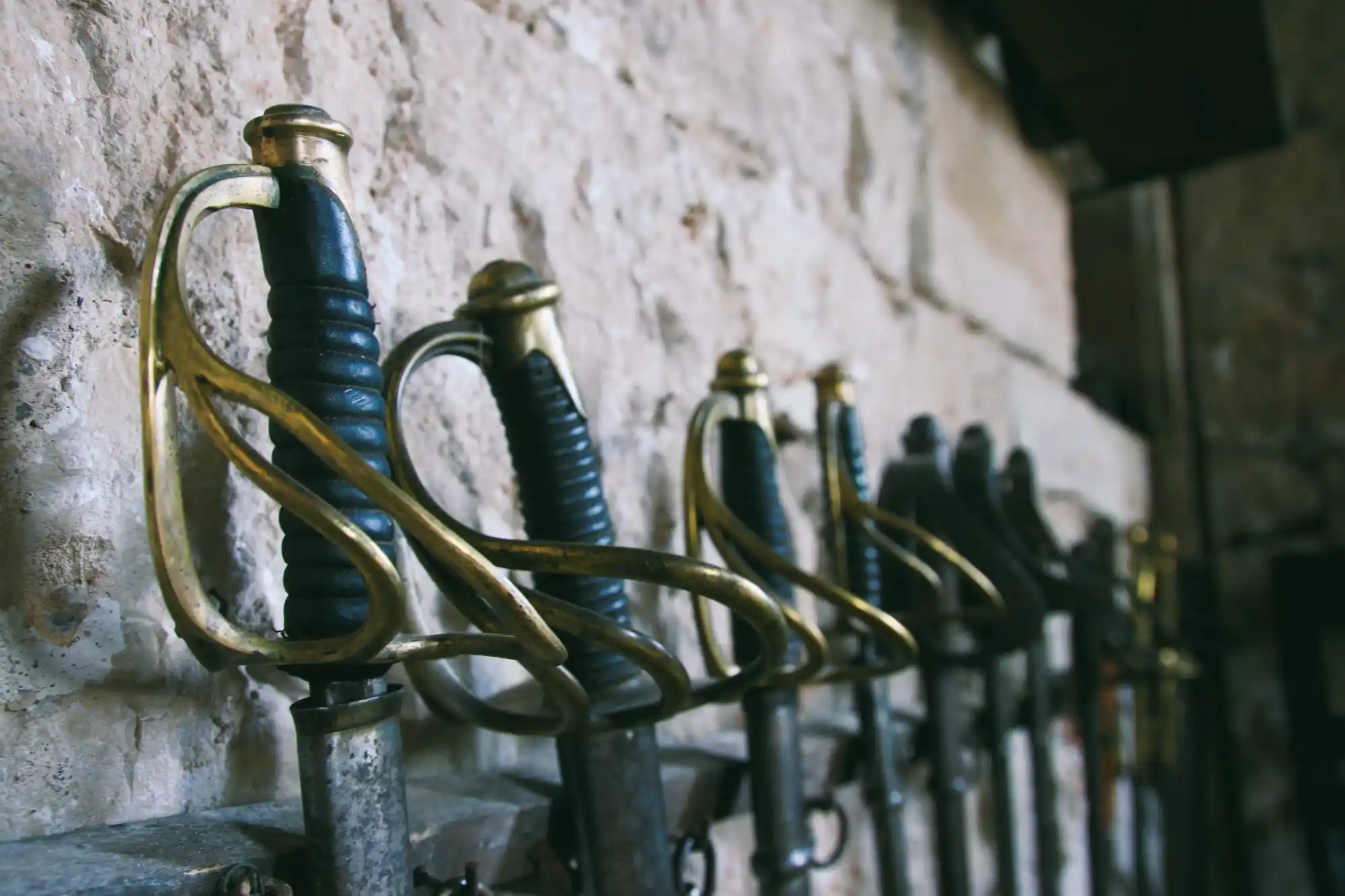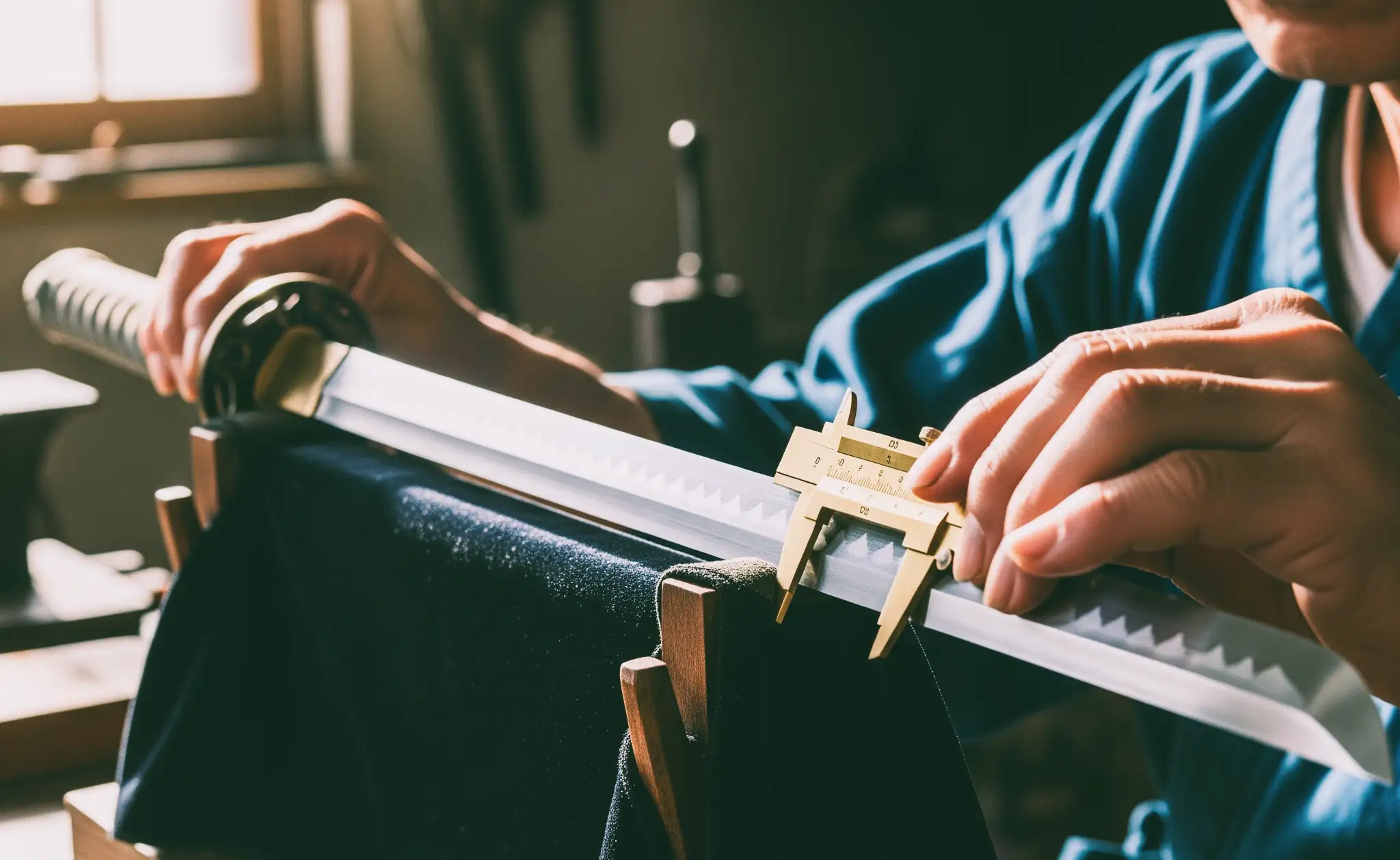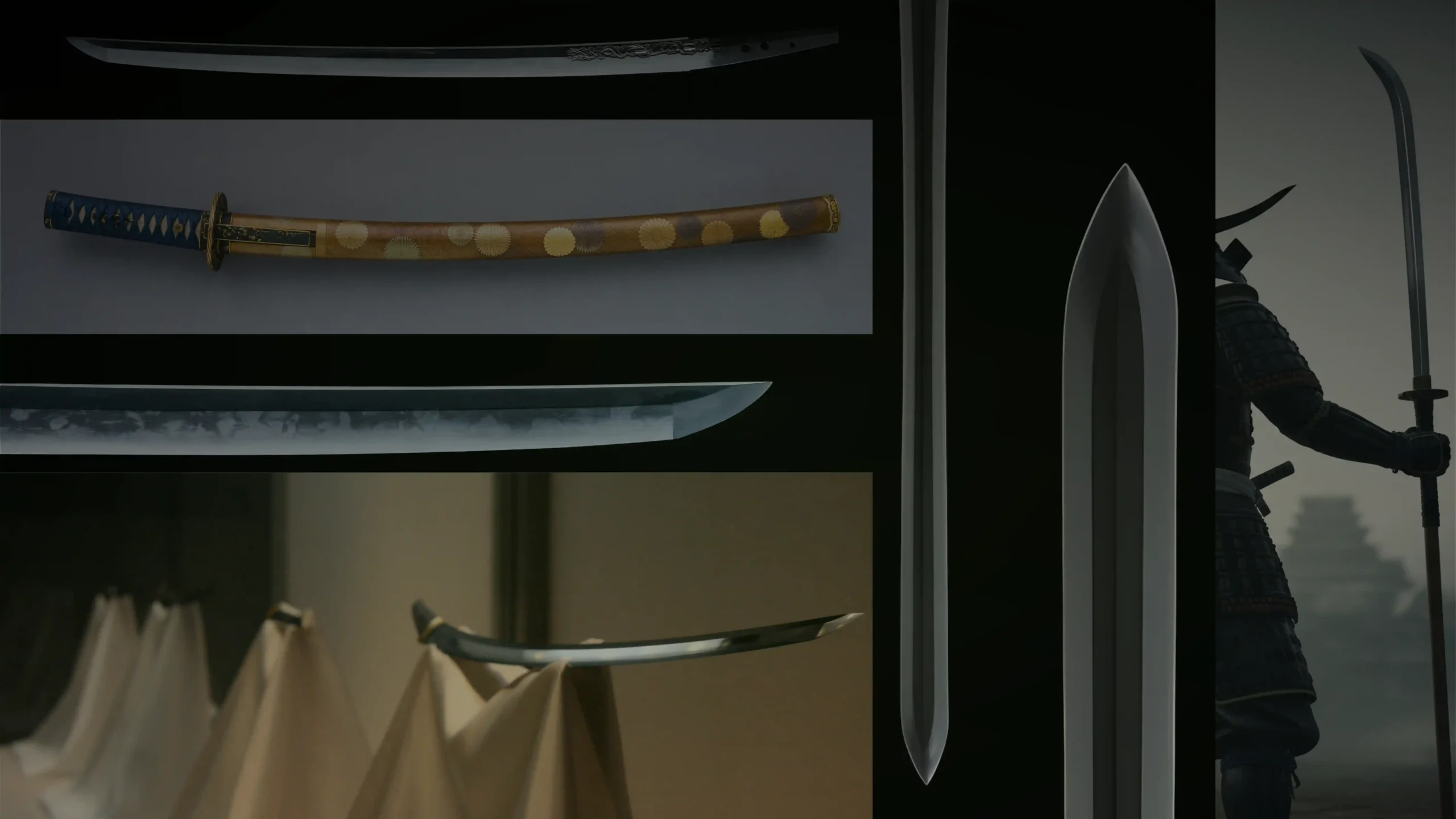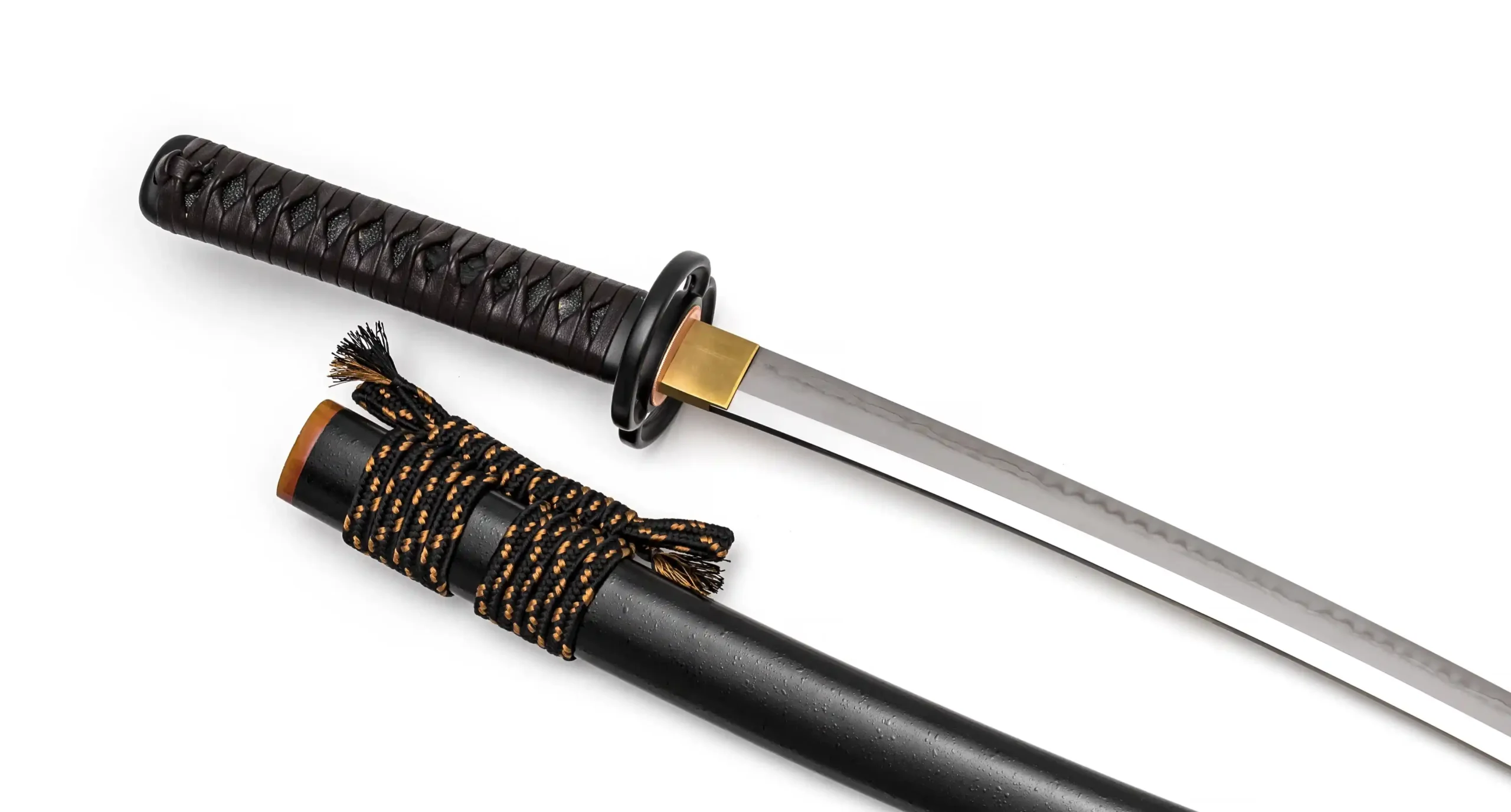We may earn revenue from the products available on this page and participate in affiliate programs. Learn more >
The bastard sword and the longsword are two European swords used by medieval warriors. Even though they look quite similar at first glance, they actually have a few differences that set them apart. Let’s take a closer look.
| Feature | Bastard Sword | Longsword |
|---|---|---|
| Origin | Europe | Europe |
| Period | 14th to 15th centuries | 13th to 14th centuries |
| Used by | Knights and soldiers | Knights and soldiers |
| Blade Length | (30 to 41 inch) 75-104 cm | (35 to 47 inch) 90-120 cm |
| Weight | 1.3 to 1.8 kg | 1.3 to 2.4 kg |
| Handle | Shorter (Hand-and-a-half) | Longer (Two handed) |
| Blade Type | Double-edged | Double-edged |
| Usage | Cut and thrust | Cut and thrust |
Historical Background
Both swords were used in late medieval Europe, with the longsword appearing first around the 13th century. It became popular across many regions, including England, Germany, Italy etc., where knights and soldiers favored it for its reach, cutting power, and effectiveness against armored enemies.
The bastard sword came slightly later, during the 14th century, as a somewhat shorter version that could be used more effectively with one hand, while still allowing the use of two hands for extra force. This type of sword was used on foot for both cutting and thrusting, as well as on horseback, where soldiers could deliver powerful, devastating blows.
Design and Characteristics
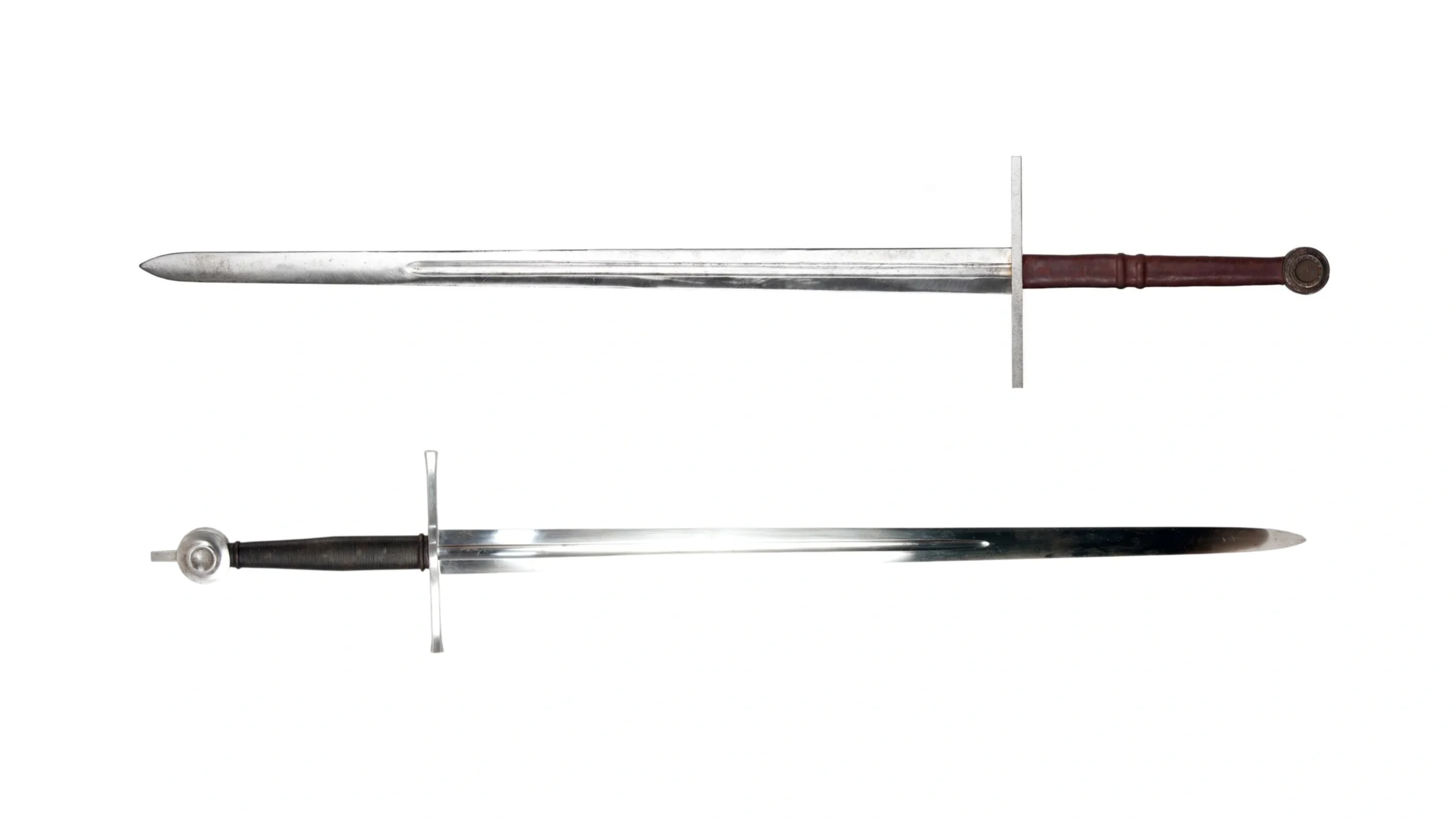
Both swords share similar designs and characteristics. They feature a straight, double-edged blade that tapers to a point, along with a handle designed for both one and two handed use. The guard can be straight or slightly curved, often similar in length, and some versions include side rings for extra hand protection during combat. The pommel also comes in different shapes, but its purpose remains the same — to keep the hand from sliding and to balance the overall weight of the sword.
The names longsword, bastard sword, and hand-and-a-half sword were used in different times and regions to describe swords of a similar style. The word longsword comes from the German term langschwert, while bastard sword comes from the French épée bâtarde. All refer to the same basic design—a double-edged blade with a handle long enough for one or two hands.
What’s the Real Difference Between a Bastard Sword and a Longsword

In short, both the bastard sword and the longsword refer to the same general type of sword. The main difference lies in their size. Bastard swords are shorter. They have a shorter blade and, most importantly, a shorter handle. These swords are balanced for the user with the following characteristics:
- Handle: The handle does not have excessive length, but it’s still long enough for a two-handed grip. Longswords on the other hand feature an extended handle, which can sometimes fit three or even four hands.
- Blade Length: The blade is not too long or too short. For the user, it should be balanced so it gives good reach, but not so much that it adds extra weight and makes one-handed use harder.
- Weight: Bastard swords are not supposed to feel heavy or difficult when used with one hand. Longswords on the other hand are not supposed to feel heavy when used with two.
Combat Performance
Even though they score similarly in most combat aspects, they differ in reach and versatility. Longswords offer better reach, while functional bastards provide more flexibility. The table below shows an approximate rating out of 100 for each sword based on what matters in a sword fight.
| Bastard sword | Longsword | |
|---|---|---|
| Cutting Power | 80/100 | 80/100 |
| Thrusting Ability | 70/100 | 70/100 |
| Piercing Strength | 70/100 | 70/100 |
| Hand Protection | 50/100 | 50/100 |
| Reach | 75/100 | 85/100 |
| Speed | 70/100 | 70/100 |
| Effectiveness vs Armor | 75/100 | 75/100 |
| Versatility | 85/100 | 70/100 |
Advantages and Disadvantages Comparison
Since longswords are longer, they offer more reach, making them more effective at controlling distance against a bastard sword. They are also easier to use with two hands, and some techniques done with both hands are better executed with it. However, you have to rely on the sword for both attack and defense.
Bastard swords, on the other hand, are shorter and offer less reach. But since they can be used with one hand, the other hand can hold a secondary tool like a shield. This is a big advantage because you can block attacks and counter at the same time. When fighting with one hand, they are slower than a longsword used with two hands. Another disadvantage is that when switching from one- to two-handed grip, some advanced two-handed techniques — such as Winding (the rotational maneuver used to maintain control in a bind) — become harder to perform, which can lower performance.
Last Words
In short, both the bastard sword and the longsword are two-handed sword types, with the bastard being better balanced for switching to one-handed use. The main difference between the two lies in their size, with the bastard being slightly shorter. Overall, both offer great versatility and maneuverability, providing excellent reach and striking power with their longer blades and balanced weight.
Want to see more comparisons?
Comparative Summary: Bastard Sword vs. Longsword
| Comparison Axis | Longsword (Dedicated Two-Hander) | Bastard Sword (Hand-and-a-Half) |
| Historical Definition (Period) | Broad term, often regional equivalent for two-handed sword (Langschwert, Spada Lunga). | Broad term, specifically French (épée bâtarde), implying intermediate or hybrid nature. |
| Typological Baseline | Oakeshott Type XVa, focused on thrusting capability (Hilt 8.5+ inches). | Oakeshott Type XVa or transitional variant (Hilt 5–7 inches). |
| Defining Dimensional Feature | Optimized for full hand separation and maximized mechanical leverage. | Optimized for robust one-hand use with optional secondary hand assistance. |
| Leverage Potential | Maximum (Ideal for KdF/Ringeck techniques) | Compromised (Ideal for versatility and single-hand transition) |
| Primary Combat Role | Dedicated dueling, armored combat (high thrust focus), specialist military weapon. | Versatile sidearm, suitable for use with auxiliary weapons (shield/buckler), confined spaces. |
FAQ
Is longsword the same as bastard sword?
The bastard sword is often considered a subtype of the longsword, designed to be slightly shorter and better balanced for one-handed use when needed.
What makes a sword a bastard sword?
A sword is called a bastard sword mainly because of its size — it sits between a one-handed arming sword and a full two-handed longsword.

